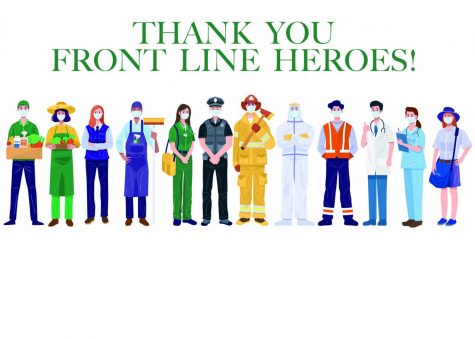Stress and Teens
November 11, 2015
“Like email and email spam, a little stress is good but too much is bad; you’ll need to shut down and reboot,” says Esther Sternberg, MD, a leading stress researcher and the chief of neuroendocrine immunology and behavior at the National Institute of Mental Health (“The Stress-Depression Connection | Can Stress Cause Depression?”) Many students however do not have the time to shut down and reboot. Some students have the issue of getting so caught up in their school work and other stress causers the last thing on their mind is relaxing.
Many students at Kelly Walsh High School care about their school work and how they perform. At Kelly Walsh academics are very important and many students take them seriously. However, under the pressure to have a 3.5-4.0 GPA, while getting all of their school work done, some students buckle under the pressure and are faced with very serious issues such as stress and its linking factors: depression, anxiety, obesity, and more. According to apa.org (American Psychological Association) average stress levels are trending downward (4.9 in 2014 vs. 6.2 in 2007 on a 10-point scale, where 1 is “little or no stress” and 10 is “a great deal of stress”) However, even though these stress levels are at an all-time low, stress is still frequently found in parents, students, and low income families. Many students, parents, etc. do not take their stress seriously and soon face the reverberations of being too stressed out.
National Institute of Health says that obesity is a major result of stress. When stressed the brain commands your body to release a potent hormone. You then get a burst of adrenaline but at the same time your body gets a surge of cortisol which tells your body to replenish the energy you haven’t used. You replenish that energy by eating. Your body continues to release cortisol as long as you are stressed. About one-third of children and adolescents ages 6 to 19 are considered to be overweight or obese that is 1 in every 6. Ages 6 to 19 are the kids from kindergarten to juniors or sophomores in college.
Paige Realing, a 20 year old junior at The University of Wyoming, has had an experience with stress. Realing said, “I am definitely more stressed out in college. The work load in high school is substantially smaller than it is in college. Most of the teachers do not know you on a personal level and that makes them much less understanding.” Realing believes that the quality of her work has been affected due to stress levels. Realing isn’t the only student whose work has been affected because of stress. Many adolescents around America are affected and are trying to take a stand by fighting for a later start in school so they get a full amount of sleep and have fully functioning brains by the time school starts.
The academic expectations are a major stressor for high school teenagers. Joseph Gilbar, a KW sophomore taking AP History, English and Algebra 2, said “On average I probably have about 10 hours of homework a week.” Gilbar is one of many students who have 10 hours or more of homework, weekly. On top of this homework these students are also expected to be involved in sports and clubs, get the recommended 8 hours of sleep, and wake up at 6:30 in the morning and be on time to school.
Stress can prove to be a major problem for students. Some students can handle the pressure of the high school academic environment but some cannot and are faced with an adversity they do not know how to deal with. Many students fight for less homework and later school start times. With no avail, these students still are not giving up. Stress is good in small amounts but when the stress piles up students buckle and are soon drowning in effects of stress. So then the question becomes: when will high schools or school districts do something about this?











